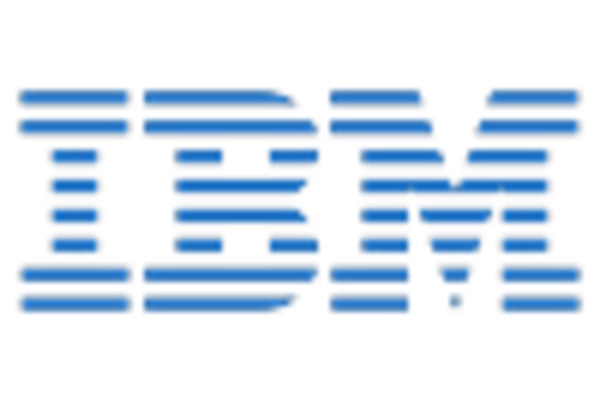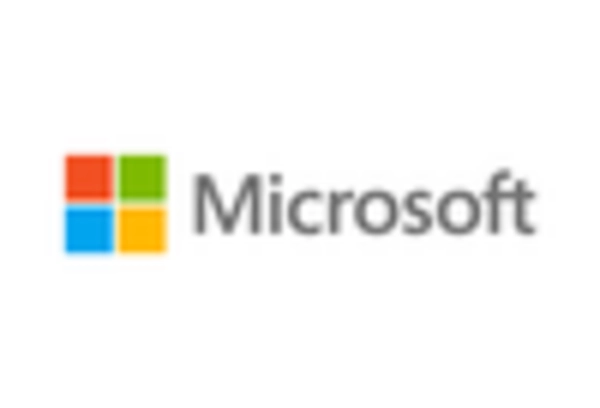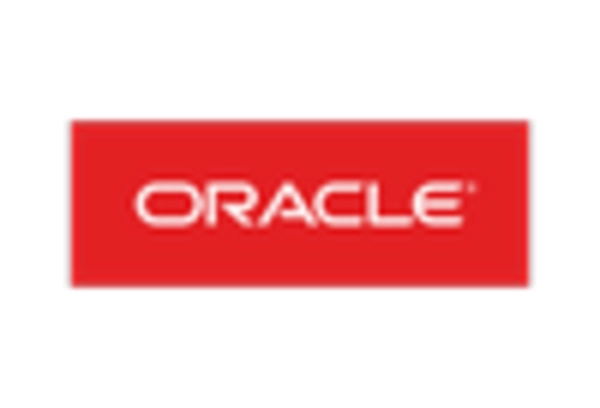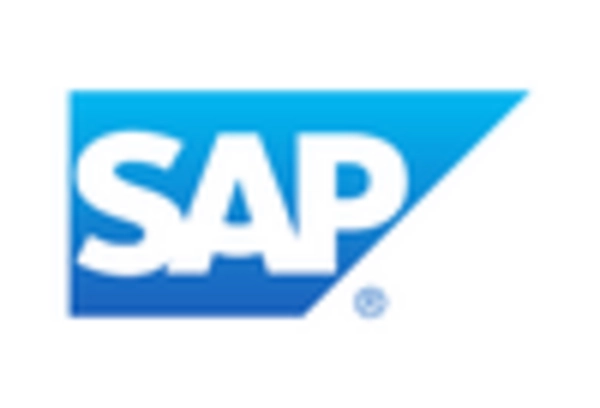Emphasis on Data Interoperability
In the context of the open database-connectivity market, the emphasis on data interoperability is becoming increasingly critical for organizations in Germany. As businesses accumulate vast amounts of data from diverse sources, the ability to integrate and share this data across various platforms is essential. The German government has initiated several programs aimed at enhancing data interoperability, which is expected to boost the open database-connectivity market. Reports indicate that organizations that prioritize interoperability can achieve up to 30% improvements in operational efficiency. This growing focus on seamless data exchange is likely to drive demand for innovative connectivity solutions that facilitate integration across different systems and applications.
Rising Adoption of Cloud Solutions
The open database-connectivity market in Germany is experiencing a notable surge due to the increasing adoption of cloud-based solutions. Organizations are migrating their data to cloud platforms, which necessitates robust database connectivity to ensure seamless access and management. According to recent data, approximately 70% of German enterprises are expected to utilize cloud services by 2026, driving the demand for open database connectivity solutions. This trend is further fueled by the need for scalability and flexibility in data management, allowing businesses to adapt to changing market conditions. As companies seek to leverage the benefits of cloud computing, the open database-connectivity market is poised for significant growth, providing essential tools for data integration and accessibility.
Shift Towards Open Source Technologies
The open database-connectivity market is witnessing a shift towards open source technologies, which is reshaping the landscape for data connectivity solutions in Germany. Organizations are increasingly adopting open source databases due to their cost-effectiveness and flexibility. This trend is supported by a growing community of developers and users who contribute to the enhancement of these technologies. It is estimated that the open source database market will reach €5 billion by 2027, indicating a substantial opportunity for the open database-connectivity market. As businesses seek to leverage the advantages of open source solutions, the demand for compatible connectivity tools is likely to rise, fostering innovation and competition within the market.
Regulatory Compliance and Data Governance
The open database-connectivity market in Germany is significantly influenced by the stringent regulatory landscape surrounding data governance and compliance. With regulations such as the General Data Protection Regulation (GDPR) in place, organizations are compelled to adopt solutions that ensure data integrity and security. This regulatory environment is driving investments in open database connectivity solutions that offer robust compliance features. It is estimated that companies investing in compliance-related technologies could see a return on investment of up to 25% through reduced fines and improved customer trust. Consequently, the open database-connectivity market is likely to expand as businesses seek to align their data management practices with regulatory requirements.
Growing Need for Analytics and Business Intelligence
The demand for advanced analytics and business intelligence tools is propelling the open database-connectivity market in Germany. As organizations increasingly rely on data-driven decision-making, the need for effective data connectivity solutions becomes paramount. Analysts project that the analytics market in Germany will grow at a CAGR of 12% over the next five years, further driving the need for open database connectivity. Companies are seeking to integrate various data sources to derive actionable insights, which necessitates robust connectivity solutions. This trend indicates a strong potential for growth in the open database-connectivity market as businesses invest in technologies that enhance their analytical capabilities.
















